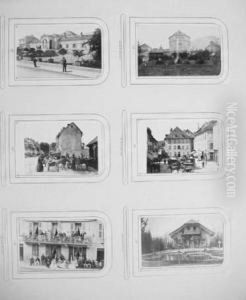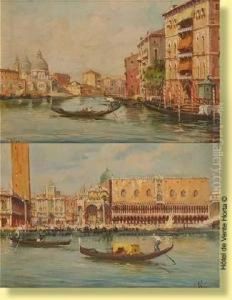Louis Vignes Paintings
Louis Vignes was a French photographer and naval officer born on August 19, 1831, in Brest, France. He embarked on his career in the French Navy, which eventually led him to the field of photography. Vignes is particularly notable for being one of the early practitioners of photography in the Middle East and the Mediterranean region.
Vignes received his training in photography from Gustave Le Gray, one of the most influential French photographers of the 19th century. This tutelage was crucial in shaping Vignes' technical skills and artistic vision. In 1863, he was commissioned by the Duke of Luynes to document an archaeological expedition to the Near East. This journey was a significant undertaking, as it involved photographing the landscapes, people, and historical sites of countries such as Lebanon, Palestine, and Syria, including the ancient city of Palmyra, which was relatively unknown to the Western world at that time.
The photographs taken by Vignes during this expedition are considered some of the earliest and most important visual records of these regions. His work provided valuable documentation of archaeological sites and played a role in the nascent field of Middle Eastern studies. The images were not only of scholarly value but also artistic, as Vignes had a keen eye for composition and light, capturing the monumental ruins and sweeping landscapes with a sense of grandeur and tranquility.
After his return to France, Vignes continued his naval career but also remained active in photography. His contributions to the field were recognized by his contemporaries, and his work was included in exhibitions and publications of the time. However, the latter part of his life is less documented than his active service years and his participation in the groundbreaking Near Eastern expedition.
Louis Vignes passed away on June 6, 1896, in Paris. While he may not be as widely known as some of his contemporaries, his surviving photographs—preserved in institutions such as the Bibliothèque nationale de France and the Musée d'Orsay—serve as a testament to his skill as a photographer and his contributions to the documentation of ancient sites. Today, Vignes' work is studied and appreciated by historians, art historians, and photographers alike for its historical significance and aesthetic qualities.

